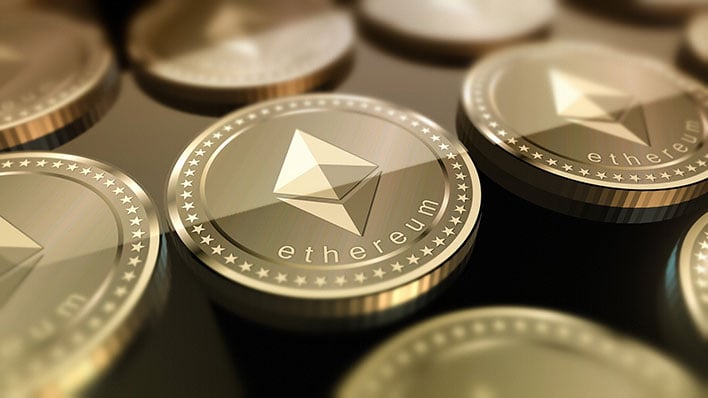Ethereum 2.0 Testnet Launch Puts Us One Step Closer To Reclaiming GPUs For Gaming

Wouldn't it be great if cryptocurrency mining had absolutely zero impact on the shortage of PC graphics cards? The answer will depend on who you pose that question to, and the actual situation is far more nuanced than it suggests. However, if you're of the opinion that mining should solely be performed on ASIC hardware, there's some good news—Ethereum flipped the switch on its Kintsugi testnet this week.
What exactly does that mean? Let's start with the basics, which is that Ethereum is a blockchain that is effectively mined with GPUs, the same ones that might otherwise go into gaming PCs (save for 'headless' cards like NVIDIA's CMP series). To be fair, mining alone is not the reason for the shortage, but it does at least exacerbate the situation to some extent.
For many months now, Ethereum has been teasing and delaying a switch from a proof-of-work (PoW) to a proof-of-stake (PoS) model, which promises to massively reduce energy consumption by 99.95 percent. When the switch takes place, miners will no longer receive rewards for solving complex math equations with their GPU hardware. Instead, the network will verify transactions (called blocks) based on a person's existing stake in Ethereum.
At that point, there wouldn't be much sense in buying a GPU to mine Ethereum. Additionally, there could be a huge sell-off of GPUs that, up to that point, had been used to mine cryptocurrency. We're oversimplifying things a bit, but that's the gist of the transition to Ethereum 2.0.
The Kintsugi testnet that has now opened to the public is a basically a test run or a warm-up lap. Nothing done on the testnet affects the actual blockchain, but it does allow the community to test the upcoming transition before it happens for real.
"Although client development and UX continue to be refined, we encourage the community to start using Kintsugi to familiarize themselves with Ethereum in a post-merge context... We recommend most projects begin testing and prototyping on Kintsugi to surface any potential issues soon. This way, changes can more easily be incorporated in future client and specification versions," Ethereum developer Tim Beiko stated in a blog post.
If all goes well, Ethereum will transition to Ethereum 2.0 in the first half of next year. Realistically, there's probably going to be another delay, though flipping the switch by the end of 2022 is certainly a realistic possibility.
Those of you hoping the GPU shortage will end when that happens, take a deep breath and prepare yourself for another long year. It's not known precisely what effect mining is having on the situation. In addition, there are still other blockchains that are friendly to GPU hardware, and it's conceivable that miners will focus their efforts on those cryptocurrencies once the transition happens. Basically, there's just a lot of uncertainty.
That said, PC gamers will take whatever relief they can get, big or small.

